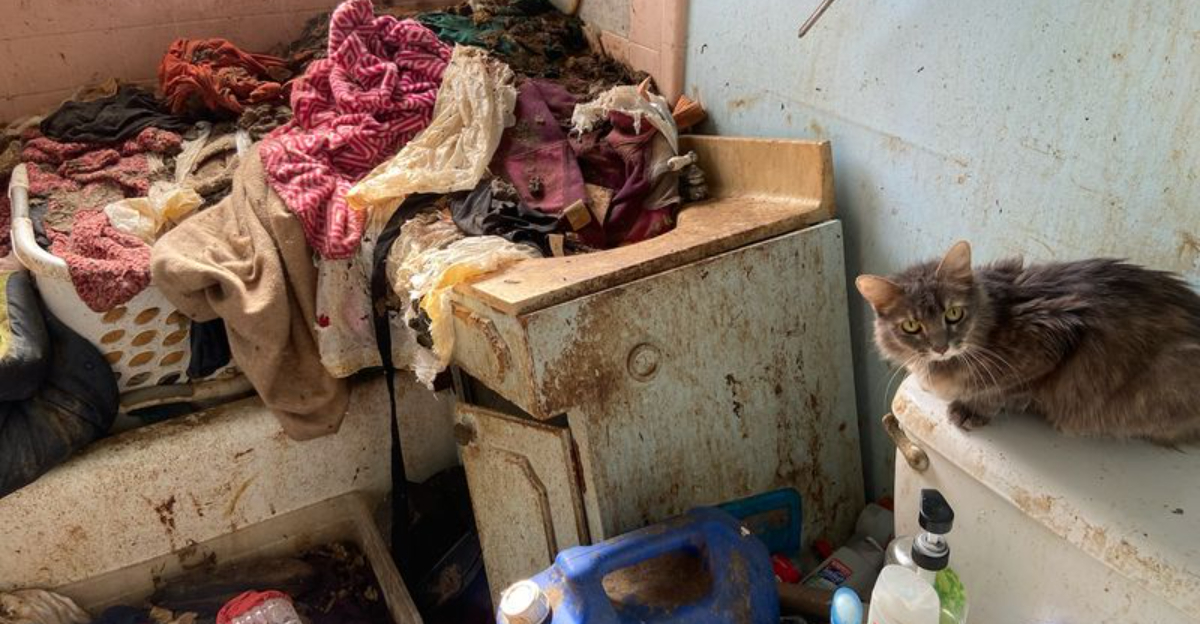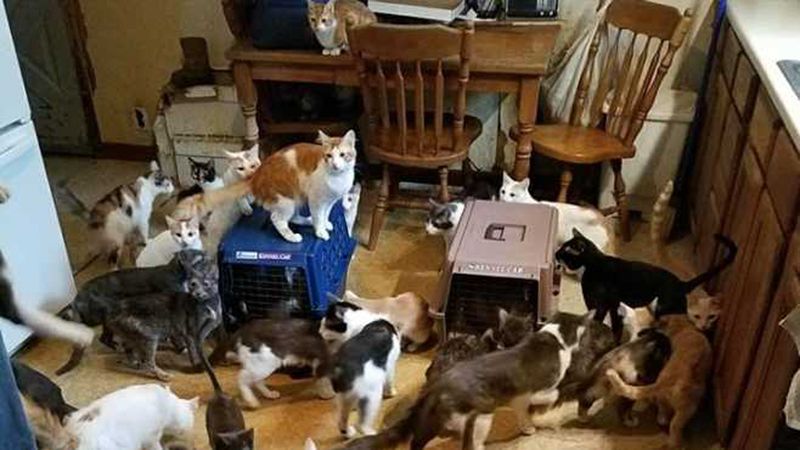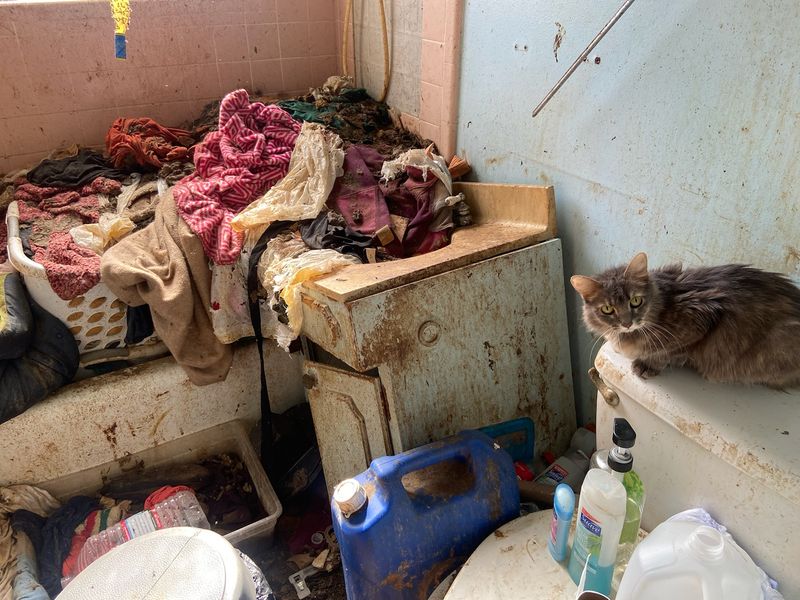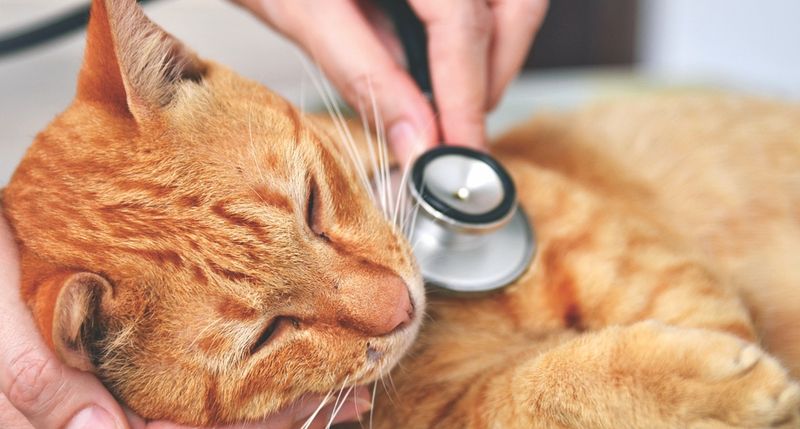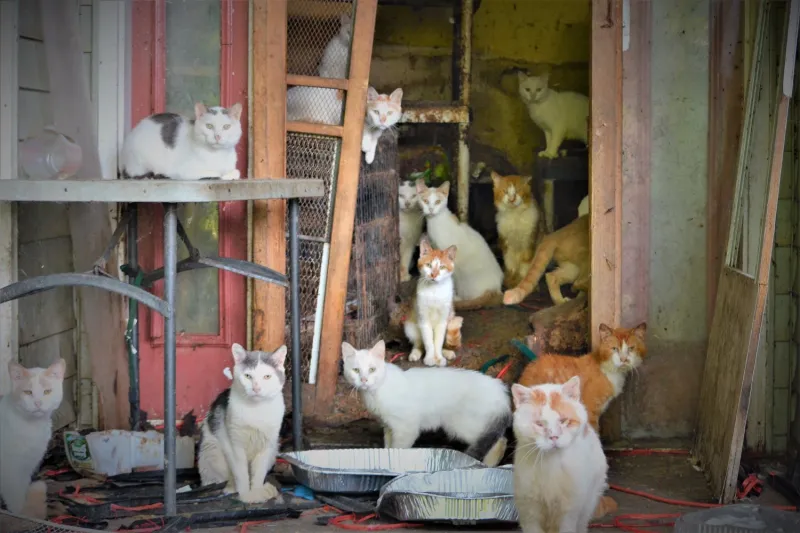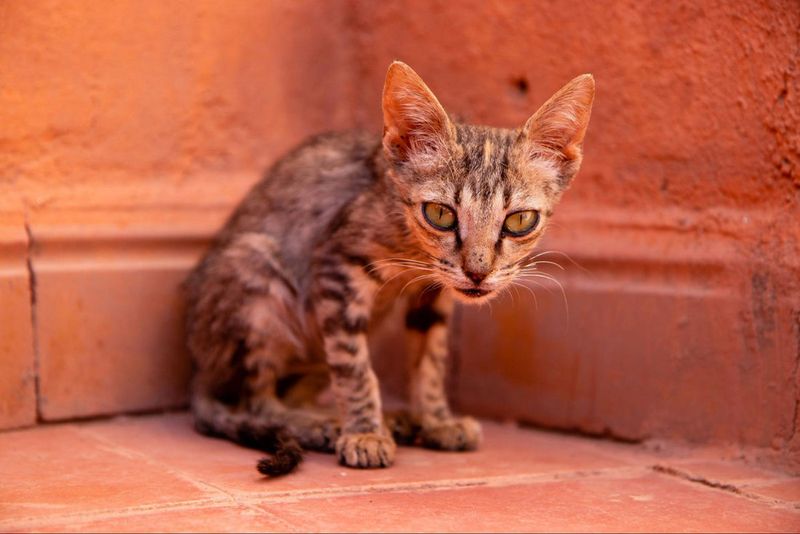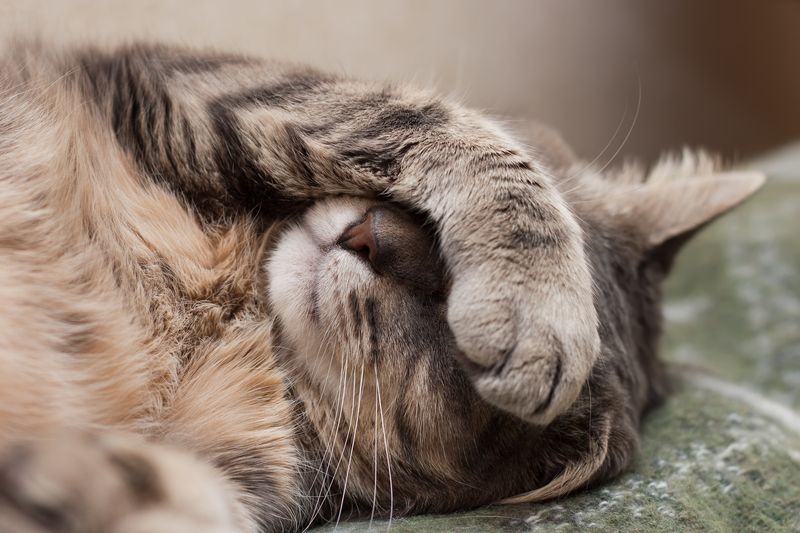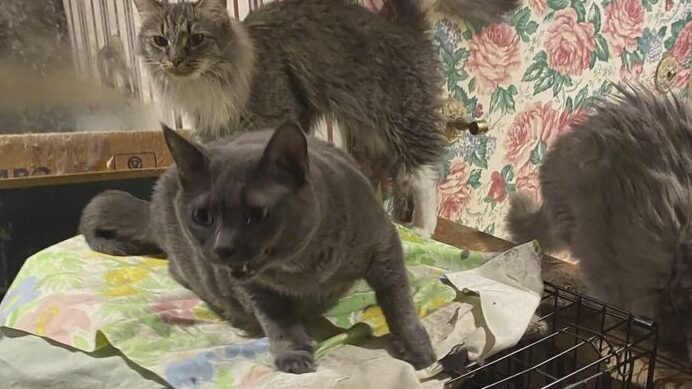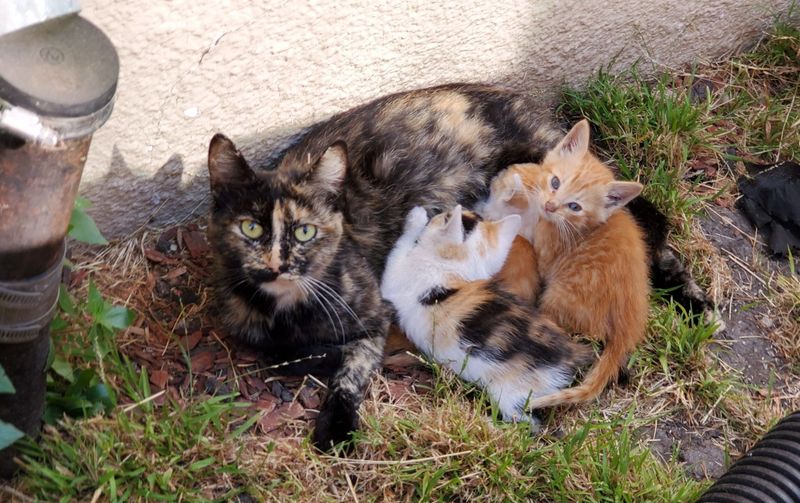📖 Table of Content:
- 1. An Ever-Increasing Cat Count Without a Limit in Sight
- 2. Noticeable Decline in Home Hygiene
- 3. Inability to Provide Proper Veterinary Care
- 4. Defensiveness or Secrecy About the Number of Cats Owned
- 5. Signs of Malnutrition or Poor Grooming
- 6. Financial Strain Directly Tied to Pet Care Costs
- 7. Denial That the Cats or the Home Are in Crisis
- 8. Cats Are Breeding Uncontrollably
- 9. Isolation from Friends, Family, or the Community
Loving cats is a beautiful thing. Many people find deep comfort and companionship in their feline friends, and it’s not uncommon for dedicated cat owners to care for more than one. But sometimes, a well-intentioned passion for helping animals can cross an invisible line—one that turns caretaking into a crisis.
Cat hoarding isn’t always easy to spot, especially in its early stages. It often begins with a desire to rescue and provide shelter, but as the number of cats grows, the ability to meet their needs can quickly spiral out of control. What once was a home filled with happy purrs can become an environment of stress, illness, and neglect—for both the cats and the person caring for them.
This article isn’t about judgment; it’s about awareness. Recognizing the signs that someone is slipping into hoarding behavior is the first step toward helping them and the animals they care about. Whether you’re concerned about yourself or someone you know, these ten warning signs can help you understand when a loving bond might be turning into something dangerous.
1. An Ever-Increasing Cat Count Without a Limit in Sight
When cat lovers find themselves constantly adopting more cats without a clear limit, it might signal a hoarding tendency. Initially, it seems manageable, but the growing count becomes overwhelming. Despite the best intentions, each new cat adds to the complexity of care required. The resources needed for food, shelter, and medical attention multiply. Instead of setting boundaries, the owner might feel compelled to ‘rescue’ more cats, gradually losing control over the situation, transforming a passion into an unsustainable challenge.
2. Noticeable Decline in Home Hygiene
The cleanliness of a cat lover’s home can drastically decline as more cats are introduced, leading to an unmanaged environment. The once-clean living space becomes cluttered and chaotic. Strong odors, such as ammonia, from litter boxes can overwhelm the senses, creating an unhealthy living situation. Accumulated waste and messes become part of the norm. This decline not only affects the cats’ health but also the owner’s wellbeing. Addressing this requires a proactive cleaning routine and possibly reducing the number of feline residents.
3. Inability to Provide Proper Veterinary Care
Veterinary care is crucial for a cat’s health, but when a cat lover starts skipping vet visits, it raises red flags. Cats may suffer from untreated illnesses or injuries. Financial constraints or sheer overwhelm might prevent regular check-ups. The growing number of cats makes it nearly impossible to track each cat’s medical history and needs. Prioritizing veterinary care and possibly rehoming some cats can alleviate stress and ensure a healthier life for the remaining companions.
4. Defensiveness or Secrecy About the Number of Cats Owned
When someone becomes defensive about how many cats they own, it suggests they might be aware of their situation’s severity. Refusal to let others visit or count their cats indicates secrecy. This behavior stems from shame or fear of judgment. Often, the owner might hide the true extent of their cat population from friends or family. Acknowledging the issue is a crucial step toward seeking help and restoring balance to their living environment, helping both themselves and their pets.
5. Signs of Malnutrition or Poor Grooming
Cats appearing underfed or poorly groomed are clear indicators of a problem. Despite loving intentions, the owner might be overwhelmed and unable to meet each cat’s nutritional and grooming needs. Malnourishment leads to health issues, and unkempt fur can cause skin problems or discomfort. Each cat requires individual attention. Ensuring proper feeding schedules and grooming routines, or reducing the number of cats, can significantly improve the well-being of the existing cats.
6. Financial Strain Directly Tied to Pet Care Costs
Pet care costs can become overwhelming, leading to financial strain for cat lovers with many furry companions. All resources might be directed toward feeding and caring for the cats, leaving personal needs unmet. The owner may sacrifice essentials like groceries or medical care for themselves to afford cat supplies. This imbalance affects the quality of life. Creating a budget that balances pet and personal needs, or considering rehoming some cats, can relieve financial stress and lead to a more sustainable lifestyle.
7. Denial That the Cats or the Home Are in Crisis
Denial is a common trait among those nearing hoarding tendencies, with cat owners claiming everything is fine despite evident crises. Ignoring distress signals can worsen conditions. The home might be in disrepair, and cats could be suffering, yet the owner insists on a skewed reality. Acknowledging problems is challenging but necessary. Seeking outside perspectives or professional help can break the cycle of denial, leading to healthier living conditions for both cats and humans.
8. Cats Are Breeding Uncontrollably
Uncontrolled breeding among cats is a telltale sign of hoarding behavior. Without spaying or neutering, the feline population can grow exponentially. Each new litter adds to the care burden, straining resources and the owner’s ability to provide adequate care. Overpopulation becomes unmanageable quickly. Implementing a spay/neuter program is essential to curb this issue, helping to stabilize the cat population and ensure a sustainable living environment.
9. Isolation from Friends, Family, or the Community
As cat ownership spirals into hoarding, social isolation often follows. Shame, fear of judgment, or overwhelming responsibilities lead to withdrawal from the community. The owner might avoid social events, ignore calls, or refuse visits, cutting off crucial support networks. This isolation can worsen mental health. Reaching out for help and maintaining social connections is vital. Support groups or therapy can address hoarding signs, promoting healthier relationships and environments.
